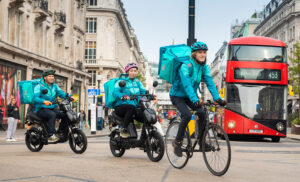As new technology and consumer choice change the way that we travel, Professor Tim Coats considers how small electric vehicles can become part of a safer and more sustainable mixed transport system.
e-scooters (electronic kickboards) have rapidly become common in cities across the world. As with many new technologies, regulation and legislation have been scrabbling to keep up with the pace of change in technology.
Different countries have taken different regulatory approaches, with most moving towards greater regulation over time. The overall trend seems to be towards mandatory speed limiters (at 10 or 15 km/h) and separation of e-scooters from pedestrians (mandatory use of cycle lanes or road).
In the UK, the Trauma Audit and Research Network data has been used to assess differences between the pattern of injuries in cyclists and e-scooter riders, finding a greater number of head injuries following a fall from an e-scooter. This might be due to riders keeping hold of the handles as they fall (whereas cyclists tend to put their arm out, sustaining limb rather than head injuries). As the data about distances travelled by unregulated e-scooters is unclear, it is difficult to know exactly.
Advertisement
There is, however, a clear pattern of human and technical factors involved in e-scooter crashes:
- Male riders
- Intoxication
- Late evening
- More than one person riding
- Private rather than public scooter
- No speed limiter
- Small wheels
- Low kickboard.
Electric personal transport methods (e-scooters and e-bikes) are likely to be part of the solution to our current transport crisis; however, without a speed limiter, these vehicles are able to travel at speeds well in excess of 30mph (48 km/h), with significant potential to cause injury to both riders and pedestrians. We need to work out the combination of scooter design, regulation/legislation and road design that is needed to maximise the benefits and minimise the potential for harm from these new technologies.
Small personal electric transport (modernised versions of an ‘electric wheelchair’ or ‘golf buggy’) are likely to become more widely available, so regulations and road design should also consider a future in which small electric transport might replace many short car journeys.
“Without a speed limiter, [e-scooters and e-bikes] are able to travel at speeds well in excess of 30mph, with significant potential to cause injury to both riders and pedestrians.”
Future planning of road and housing layouts should incorporate consideration of the part that electric-assisted scooters, bikes and other small vehicles can play in a mixed system of sustainable travel. E-scooters and e-bikes have shown us just how quickly new technology and consumer choice can change the way that we travel – this should be seen as an opportunity to move towards a more sustainable and safer mixed transport system.
Join the conversation about speed by signing up for Road Safety Week.
By Tim Coats – Tim is Professor of Emergency Medicine at the University of Leicester in the UK and Chairs the Trauma Audit and Research Network. He has a particular interest in trauma epidemiology and the organisation of prehospital and hospital care for the victims of severe injury.
Advertisement
















